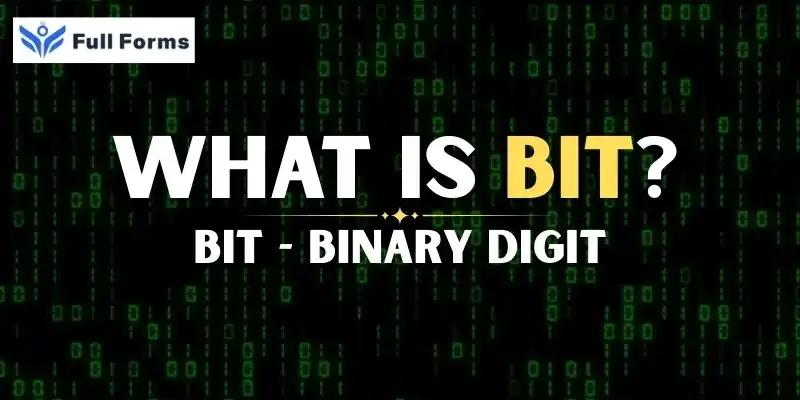Binary Digit
(BIT)

Description
What is a binary digit (bit)? It’s just the most basic unit of computers.
Ever wonder how computers operate and process information? How do they manage to keep your pictures, run games, or enable Internet surfing? Well, the answer is stupidly simple but highly powerful: the binary digit, or bit.
We will discuss what binary digit means, why it is important and how everything about computer technology is based on it in this article. Don’t worry if this is your first time, we will keep it simple!
What does a binary digit mean?
A bit or a binary digit represents the smallest data that a computer can hold. Strictly, there can only be two probable states for it to take up – either 0 or 1.
One might picture it as a tiny switch that has off (0) or on (1). Here’s how computers save and process information: by a simple on/off switch.
Usually two-state digital devices can be seen in electronic circuits in computers which allow such conditions as on (with electric current) and off (without electric current). It, hence, makes the operation of computers the easiest and best by applying two values: 0 and 1.
A bit is only 0 or 1, but strung together, they can allow computers to represent and show much more varying complex data, including sounds, letters, numbers, pictures, and videos.
For example:
- Only 0 or 1 can be represented by a single bit.
- Because of math, two bits can therefore represent up to four different values: 00, 01, 10, 11.
A byte is composed of eight bits, and thus, it is equivalent to 256 distinct values ranging from 0 to 255.
Bits and Bytes
A byte is a group of eight bits. Bytes are used to store larger pieces of information such as letters and numbers. For example:
- the letter A is stored in a byte as 01000001
- the letter B is stored in a byte as 01000010
What's the big deal with bits?
Any digital information is made up of bits. Any of the pictures, music, movies, or documents that you look through on your computer, phone, or television all are made up of bits, just in different patterns.
Here’s what makes bits so darn important:
- Data storage: Your photos, music, video and documents are all stored as bits.
- Sending data: When you send an email or message, bits are what travel over the internet.
- Processing: Computers take in bits to run programs and do things.
Text: In which one way to use bits.
Some ways that computers express numbers are using bits to represent them in binary if you don’t know the computer system is virtually unreadable. In binary, the number 5 is 101 (1×2² + 0×2¹ + 1×2⁰).
4. Text: Each alphanumeric character is converted into a number and kept in bits of storage.
Well-known, this is the ASCII code, a system that gives characters 8-bit codes.
5. Pictures
Pixels are small pieces in a digital picture. Each pixel’s colour is held in bits.
4. Sound:
A series of bits represents sound waves.
Bandwidth and Bit Rate
You may have heard some terms such as “megabits per second” whenever we discuss the fastest internet speed or transferring data. This actually tells us how many bits are sent per second.
Operations on Bits
There exist special operations in programming that work directly on bits:
- AND: Both bits have to be 1 for the answer to be 1.
- OR: One of the two bits will be 1.
- XOR: Only one bit from the two must be 1.
- Doesn't: switch the bit between 0 and 1 or 1 and 0.
OPERATIONS LIKE THIS ARE USED IN ALL COMPUTER ALGORITHMS FOR DATA PROCESSING AND ENCRYPTION.
DID YOU KNOW IT ORIGINATED WITH THE WORD “BIT”?
THE WORD “BIT” WAS COINED BY JOHN W. TUKEY, A RENOWNED MATHEMATICIAN AND STATISTICIAN, IN 1946. IT DERIVES ITS NAME FROM BINARY DIGITS.
BIT - A BINARY DIGIT OR BASIC WAY COMPUTERS KEEP INFORMATION.
- Only two possible values: 0 and 1.
- Bits aggregate to form bytes and still larger data structures.
- Everything in digital information—text, pictures, sound, video—is composed of bits.
Understanding what bits are will help us understand how computers store and process data.
Bits maybe small but mighty! They’re the basic components to all digital technology we use daily, no matter if it’s just a basic calculator or the most advanced supercomputer running on these very simple 0s and 1s.
So whenever you send a message, watch a video, play a game, or whatever it may be, keep in mind that it all comes down to millions or even billions of bits getting it all right together.
